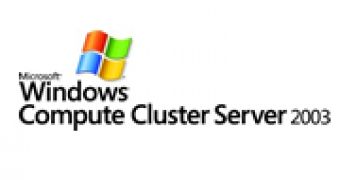Windows Compute Cluster Server 2003 is Microsoft's Windows platform introduced to high-performance computing. A move that made Microsoft an established presence on the supercomputing market. The International Supercomputing Conference in Dresden, Germany was the stage where Windows Compute Cluster Server 2003's strong connection with the high-performance computing industry was applauded by making it on the top 500 ranking of the most powerful supercomputers worldwide. Windows Compute Cluster Server 2003 is still far from the world's top supercomputer; nonetheless, Microsoft is continually increasing its profile on the HPC market.
"Windows Compute Cluster Server 2003 served as the underlying operating system for a new HPC cluster at Mitsubishi UFJ Securities, which is a part of one of the largest financial services institutions in Japan. Its expanding derivatives business will leverage a Windows-based clustering to enhance risk-management practices and reduce simulation times. Mitsubishi UFJ Securities chose the Microsoft Windows platform because of the power, familiarity, and ease-of-development in Microsoft Visual Studio 2005 and Visual C++. Its top 500 benchmark on Windows Compute Cluster Server was run on a 448-node IBM BladeCenter HS21 cluster with 1,760 processors, and placed at 193 on the top 500 list," Microsoft revealed.
By comparison, the most powerful supercomputer in the world is now DOE's IBM BlueGene/L system, installed at DOE?s Lawrence Livermore National Laboratory (LLNL), featuring no less than 131,072 processors, and speeds of over 280.6 teraflops. The 448-node IBM BladeCenter HS21 cluster running Windows Compute Cluster Server 2003 can only manage 6.52 trillion computations per second (teraflops).
"Windows Compute Cluster Server also served as the underlying operating system for a new HPC cluster at Microsoft?s datacenter in Tukwila, Wash., which ranked 106 in the top 500. This system achieved 8.99 teraflops on 256 compute nodes and 2,048 processing cores of 64-bit Intel Xeon 5300 quad-core processors, powering Dell PowerEdge 1955 blade servers and Cisco infiniband switches," the Redmond Company added.

 14 DAY TRIAL //
14 DAY TRIAL //